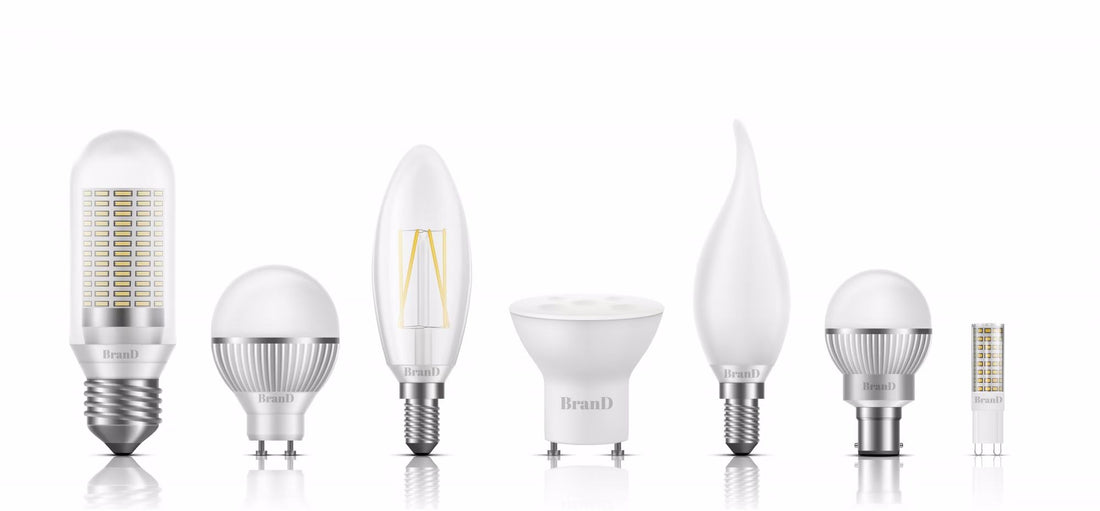
Light Bulb Shapes, Sizes and Base Types Guide
Modern light bulbs can be used in a variety of fixtures, and each fixture has its own particular requirements of size and shape of the bulb that it is compatible with. This article will briefly cover each category and provide you some useful information so that you actually know which type of bulb you need for different situations and fixtures. Why is it good to know this? Simply because the next time you will go to purchase a new light bulb for your fixture, you will know what you are looking for.
Bulb shapes
The main shape designations of light bulbs are:
- A – Standard household incandescent light bulb shape (widely used for home lighting, universal);
- B – Bullet tip;
- BT – Bulged or Blown Tubular bulb shape (used for table lamps);
- BR – Short reflector style light bulb;
- C – Candle or Conical bulb shape (used for chandeliers and decorative lamps);
- CP – Crystalline Pear bulb shape;
- E – Ellipsoidal bulb shape;
- ER – Extended reflector light bulb shape;
- F – Flame style candelabra bulb shape;
- G – Globe bulb or circular bulb;
- HK – Hexagonal Candle;
- K -Krypton or narrow reflector light bulb shape;
- MB – Halogen bulb;
- MR – Quartz reflector lamp (low wattage);
- P – Pear bulb shape;
- PAR – Parabolic Aluminized Reflector (PAR) lamp;
- PS – Elongated standard incandescent bulb;
- R – Reflector light bulb style;
- S – Strait Sided bulb style;
- T – Tube lamp shape.

However, only three of all the shapes are widely used for everyday purposes (e.g. household), namely:
A-shaped bulbs. “A” type bulb shapes are standard types for household lighting but you will see different variations and types of them. However, the standard bulb sizes are A19 and A60. The letter indicates the shape of the bulb but the number following it is the diameter of the bulb in eighths of an inch. For instance, A-19 bulb means that it is s “A” type and the diameter would be 19/8″. For non-imperial measured bulbs, the number after the bulb shape is the number of centimeters at the widest point of the bulb.
B and C-shaped bulbs. B-shaped bulbs are also known as Candelabra bulbs. Bulbs with this shape have a bulged base that attenuates to a rounded tip. C-shaped bulbs look very similar to holiday lamps. The bulbs of this shape are very wide-spread in chandeliers, night lights, and lower wattage applications.
PAR-shaped bulbs. PAR light bulbs use a parabolic mirror that focuses all the light. For LEDs, the PAR designation is used for defining the shape since most of the LEDs lack any have a reflective lower surface. The most common of PAR lamps are PAR20, PAR30, PAR38 and PAR42 type of bulbs; nevertheless, those are just a few of the types available. These bulbs come in various beam angles and they are widely used in spotlights and flood lights.
Bulb base types
Altogether you can divide all the bulbs into 6 base types:
- Screw bases;
- Twist and lock bases;
- Specialty bases;
- Bi-Pin bases;
- Fluorescent pin bases;
- Compact fluorescent lamp plug-in bases.

However, just two of these base types can be considered as the main ones, namely, screw bases and pin bases. Each of the base types work differently as their main function is to connect the light bulb to the electrical voltage and the technology of how it is achieved is different in each case.
Screw bases
Screw bases are the most common light bulb base. You might also hear them referred to as Edison base light bulbs. In an incandescent or halogen screw base light bulb, two contact wires link the filament to the base where the electrical voltage is connected to the bulb. Screw bases are made in several sizes, and on the packaging you will see that they are referred to by a descriptive name and size. Unlike in the case of the light bulb shapes, the number in the light bulb base indicates the light bulb base diameter in millimeters, for instance, the candelabra E12 has a diameter of 12 millimeters. The most common screw base sizes are E5, E-5, E10, E-10, E11, E-11, E12, E-12, E14, E-14, E17, E-17, E26, E-26, E27, E-27, E39, E-39, E40 and E-40.
Pin bases
Pin bases are mainly used in linear fluorescents, plug-in compact fluorescent bulbs, MR16s, and a few types of HID light bulbs. The principle of pin base bulbs differs significantly from screw base lamps. Whereas the screw base connects the light bulb to the voltage with two contact wires connected to the metal base, pin base light bulbs contain two pins that stick out of the base and connect the bulb to the voltage. Electrical current then can pass through the pins and flow into the light bulb to excite the filament and produce light.